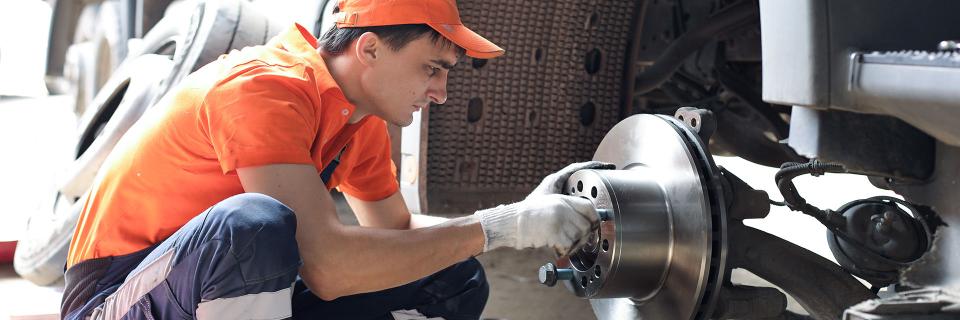
The best-case scenario surrounding a roadside brake inspection is for drivers and trucking companies to be prepared ahead of time. This way, the inspection can proceed in a timely manner, follow all safety protocols and result in drivers being cleared to get back on the road. Here’s what to expect with a brake inspection.
Do I Really Need to Worry About This?
Yes! Aside from the aforementioned public safety and business continuity reasons, a truck sidelined by a failed brake inspection will affect your Compliance and Safety Accountability (CSA) score, as tallied and monitored by the Federal Motor Carrier Safety Administration (FMCSA). This score is used to measure high-risk carriers and drivers and could cause trouble for a driver and/or a trucking company if it gets too high.
What Does a Brake Inspection Include?
Roadside inspectors will check:
- Air pressure (and the existence and operation of your low-pressure warning light)
- Brake adjustment
- Anti-lock brake warning light and system operation
- Air loss rate
- All hardware and tubing
- Linings and drums
They will verify that all of the above listed items are in operation and there is no cause for concern. As always, drivers undergoing inspection should also have their license, authority number and registration on hand to show the inspector.
Can I Do Anything Else to Prepare?
Your first way to prepare should be a preventative maintenance (PM) program. While having a specific program like this might be more common in a larger trucking company, even smaller fleets or owner-operators can secure checklists from third parties to incorporate into their everyday maintenance work. They can also create and/or follow their own internal guidelines to ensure brake safety and compliance in preparation for continued safe operations and periodic inspections.
Additionally, drivers should always do their own brake inspections prior to each trip. This process should be part of the routine pre-trip inspection enforced collaboratively by maintenance and/or management.